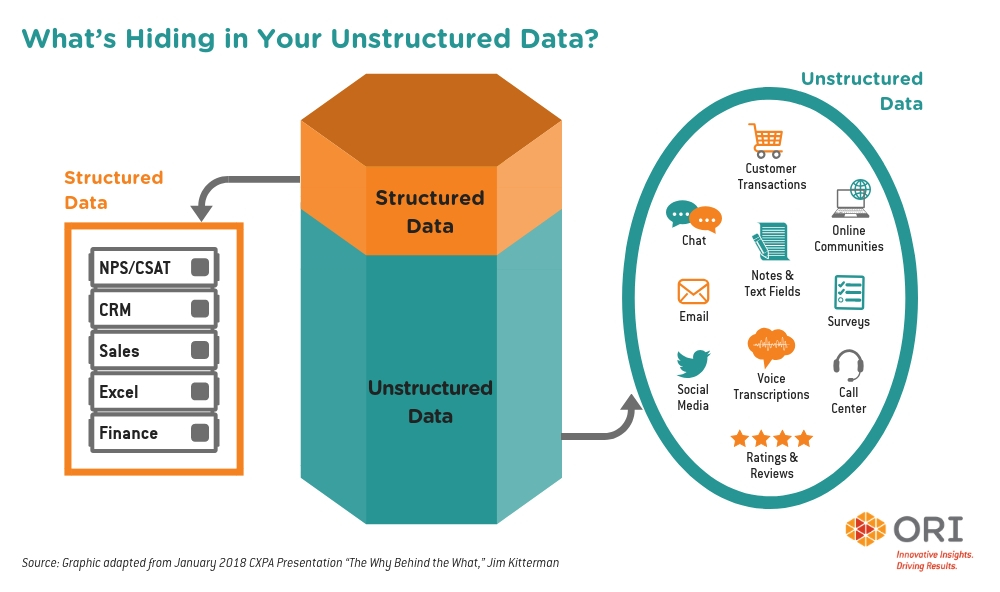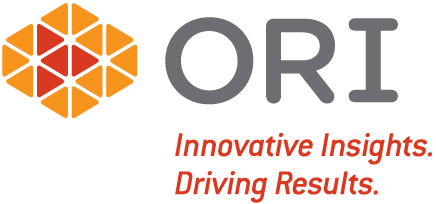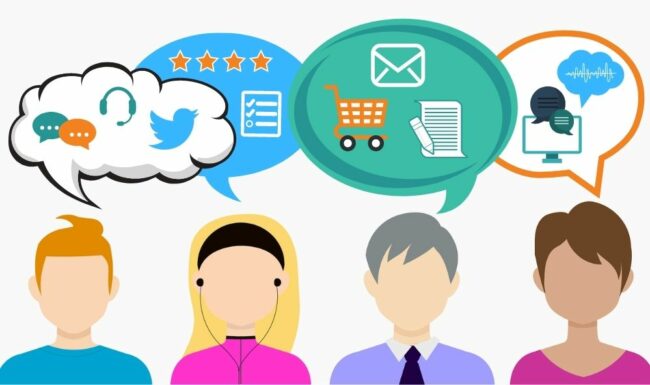Unstructured Data Mining: Are You Leaving 80% of All Customer Data Untouched?
By Kathy Benson, CEO & Co-Founder, ORI
What if your customers are already telling you everything you’d like to know about what they want, what they need, and how they feel about you (not to mention how they feel about your competitors)? There’s no crystal ball necessary—just data. Well, data mixed with some good old-fashioned customer experience (CX) and the innovations of modern technology.
So Much Data, So Little Time
It’s widely quoted that attracting a new customer costs five times as much as keeping an existing one (Technical Assistance Research Project). If retaining existing customers is so profitable (and clearly the overarching goal of any business), why is it so difficult to achieve? Let’s call this the “data fog”—all of the information swirling around out there through which customers are telling you how they feel, what they need, and which new offerings they want—which, in the past, was virtually impossible to analyze when dealing with a large volume of customers.
Traditionally, researchers focused on structured data (neat and tidy rows and columns of numbers found in spreadsheets and standardized platforms) and had limited ability to dig into the individual sentences and paragraphs found in emails, open-ended survey responses, audio/visual files, and social media (the so-called “unstructured data”). But that has all changed with modern technology. By applying the innovations of today’s CX analytics and social media monitoring and engagement tools, organizations can transform these previously hard-to-mine data sources into customer insights rich with high-value outcomes.
Why Is Unstructured Data So Important?
Approximately 2.5 quintillion bytes of data are created each day—and, according to Gartner, it is estimated that 80% of all data is unstructured. Simply put, there’s a lot of data out there—and it’s growing by the second. Each time a customer, prospect, or stakeholder interacts with or mentions your organization or brand, they are generating unstructured data (think contact center recordings and the endless stream of Twitter posts). And since it is not organized in a predefined manner, this 80% of data can be unwieldy—but also immensely valuable if you care about improving customer experience and the bottom line.

This deluge of commentary and feedback comes directly from your customers and is brimming with insights into their experiences, wants, and needs. In other words, your customers are talking—through social media, community forums, emails, chats, surveys, reviews, calls, and even your own notes—but are you listening? The insights are there, albeit hiding in your unstructured data.
Structured & Unstructured Data + Technology = Actionable Insights
Because the vast majority of data being generated is unstructured, not exploring these sources can mean missing out on tremendous potential. Utilizing current AI-driven technology to efficiently analyze unstructured data provides insight into important behavioral trends—moving you beyond “what” buyers think into “why” current and potential buyers in your marketplace are engaging with you or shifting their business elsewhere. By understanding the “why” behind the “what,” you can meet customer needs and expectations more effectively while also making strategic decisions for bottom-line impact. This means not only reducing customer churn but dialing into opportunities to increase customer spending, boost advertising effectiveness, and potentially save millions of dollars.
While analyzing unstructured data alone can generate valuable insights, it is most powerful when paired with structured data, such as demographics, job roles, satisfaction or importance scores, and other KPIs. By combining structured and unstructured data, you can unlock detailed insight into segment trends, “centers of influence” that can make or break your brand, major pain points driving lower scores, as well as areas of strength that are driving higher scores. Leveraging all of the data collected—both structured and unstructured—ensures “systematic listening” whereby you are maximizing value from each and every customer insight data point you have.
Key to leveraging the full range of data available is utilizing new technologies that enable advanced natural language processing (NLP), sentiment analysis, and level of effort (LOE) detection while maintaining connections to your dataset’s structured attributes. These three analysis tools open up a wealth of possibilities for building a detailed and nuanced understanding of what your customers are thinking, feeling, and saying. Keyword detection alone can ignore the intricate and complex nature of sentences with multiple clauses while basic sentiment analytics often misses sarcasm, complex noun-adjective pairs, and context-specific meanings. Meanwhile, LOE detection deepens the analysis by providing insight into one of the key predictors of future engagement and business: effort.
Tapping into the plethora of resources offered by advanced text analytics can open the door to a holistic view of what your customers are saying and pinpoint specific action steps to capitalize on that information. By utilizing advanced text analytics to gain insight into unstructured data while maintaining connections to structured data sources, you can truly begin to not only hear what your customers are saying but also identify what to do about it.
This article was originally published by the Women’s Business Enterprise National Council (WBENC) blog as part of a series from members of the Host Committee for the 2019 WBENC National Conference & Business Fair. ©WBENC, reprinted with permission.












